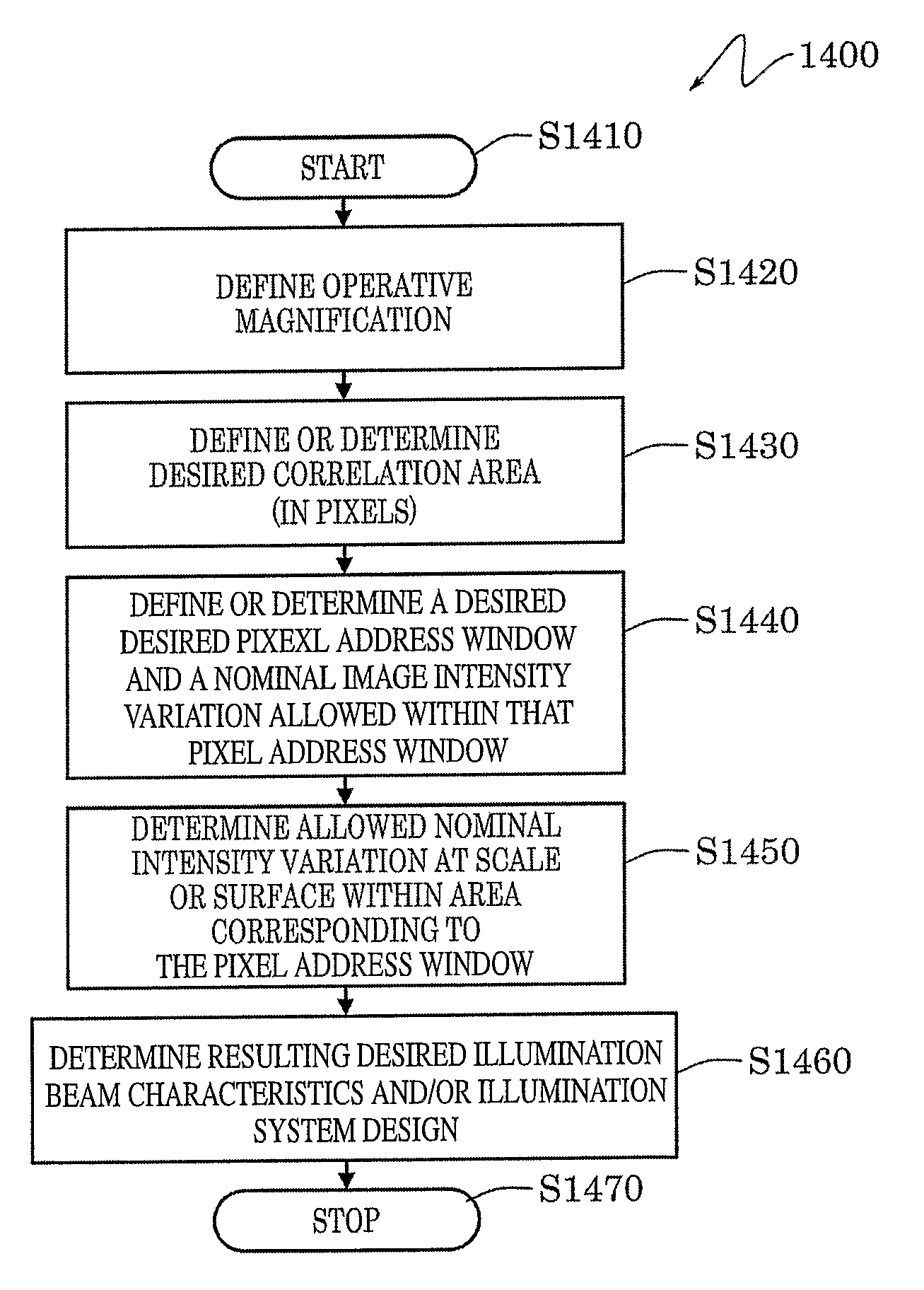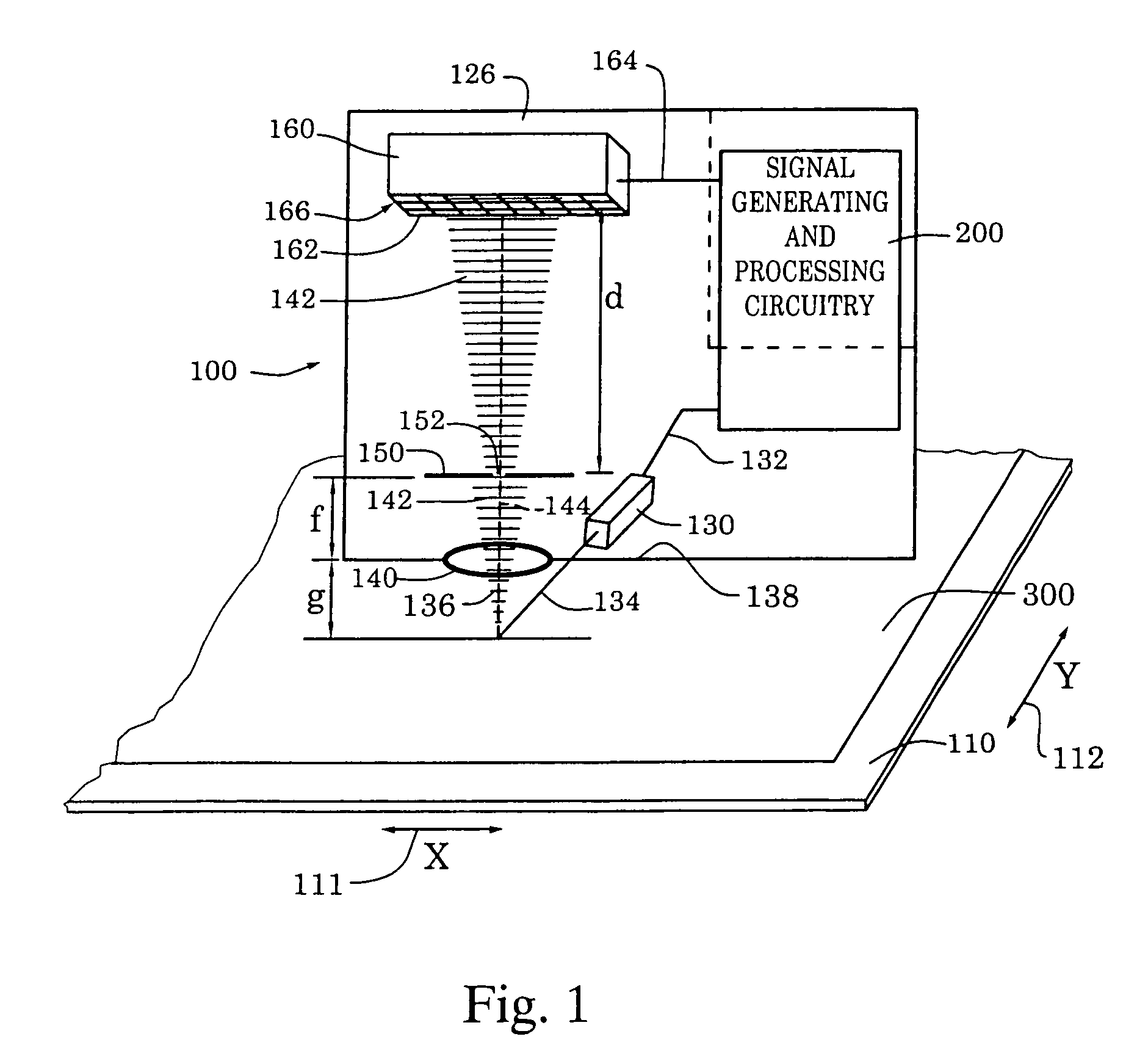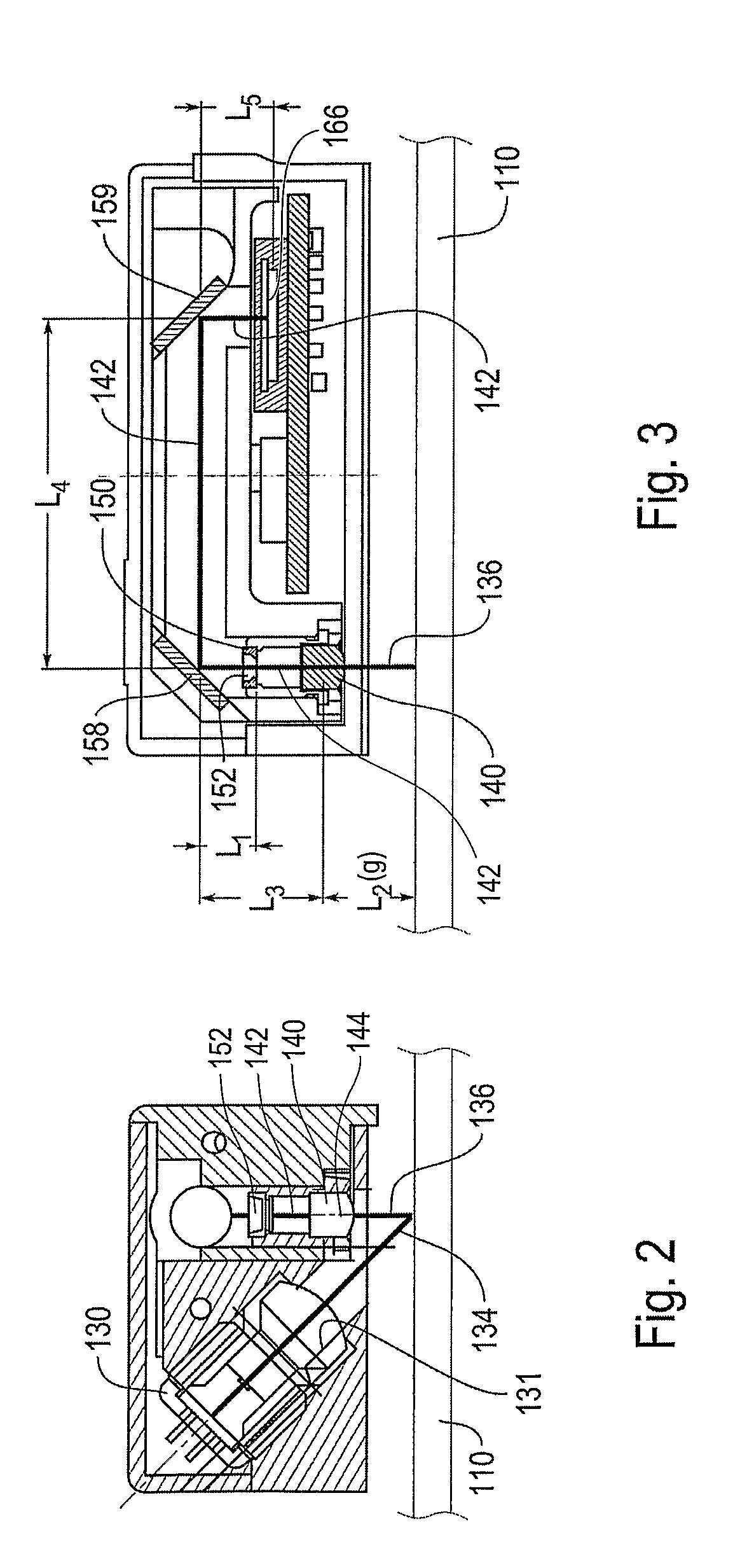Displacement transducer with selectable detector area
a transducer and detector area technology, applied in the field of correlation displacement transducers, can solve the problems of reducing failing to consider several important system problems, and disadvantageous requirements for various assembly tolerances, so as to reduce the rate at which correlation image acquisition and measurement can be performed, increase the amount of information delivered, and reduce the displacement speed
- Summary
- Abstract
- Description
- Claims
- Application Information
AI Technical Summary
Benefits of technology
Problems solved by technology
Method used
Image
Examples
Embodiment Construction
[0036]FIG. 1 is a block diagram of an exemplary optical position transducer 100 usable to generate a position measurement. The optical position transducer 100 includes a readhead 126, signal generating and processing circuitry 200 and a surface 110. The surface 110 may include a scale pattern 300, which may be imaged by the optical position transducer 100 to generate an incremental or absolute position measurement, or the surface may be an optically rough surface from which the optical position transducer 100 may generate a displacement measurement from a speckle pattern arising from the optically rough surface, without the need for a scale pattern. The components of the readhead 126, and their relation to the surface 110 and the scale pattern 300, are shown schematically in a layout that generally corresponds to an exemplary physical configuration, as further described below.
[0037]In particular, the surface 110 is positioned adjacent to an illuminating and receiving end 138 of the ...
PUM
 Login to View More
Login to View More Abstract
Description
Claims
Application Information
 Login to View More
Login to View More - R&D
- Intellectual Property
- Life Sciences
- Materials
- Tech Scout
- Unparalleled Data Quality
- Higher Quality Content
- 60% Fewer Hallucinations
Browse by: Latest US Patents, China's latest patents, Technical Efficacy Thesaurus, Application Domain, Technology Topic, Popular Technical Reports.
© 2025 PatSnap. All rights reserved.Legal|Privacy policy|Modern Slavery Act Transparency Statement|Sitemap|About US| Contact US: help@patsnap.com



